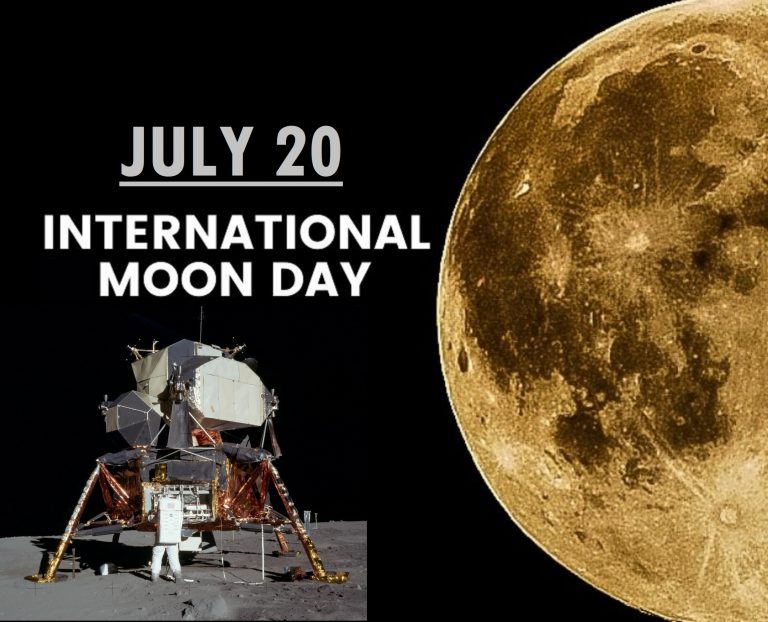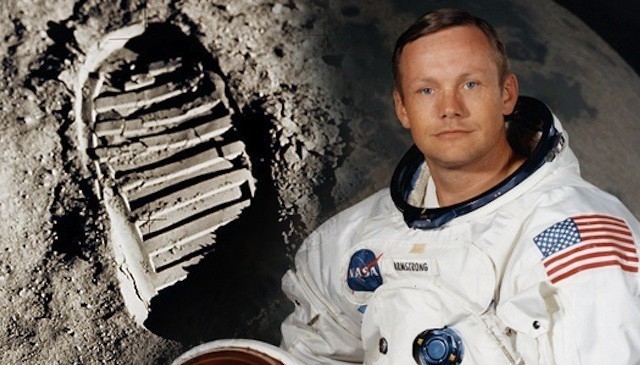
Apollo was the first crewed mission from earth to moon. Neil Armstrong and his team had landed on moon on July 20, 1969.
By Muhammad Haseeb Sikandar
The Moon is a well-known big bright object in space, which appears at night. Sometimes we can also see it in the daylight; but when the weather is cloudy, it becomes invisible. It gives us natural, soft and soothing moonlight, which is actually not its own light but is borrowed from the Sun. When the sun shines, its light brightens the moon and we can see it shining. When the earth comes between the moon and the sun, during its orbiter movement, the moon becomes dark for a while and the ‘Lunar Eclipse’ takes place.
People who love the moon are called ‘Selenophile’. It is said that these people carry a sensitive, beautiful and loving nature. Besides Selenophiles, almost all people love to see the moon, especially during the nights of the full moon (i.e. from the 12th to the 16th night of the moon’s journey.)
‘International Moon Day’ is celebrated on the 20th of July every year. This International day celebrates the historic lunar landing on July 20, 1969, by Neil Armstrong and his team.
 The United States’ mission ‘Apollo 11’ was the first crewed mission from Earth to the moon, which touched the surface of the moon on this day 53 years ago. There were 6 crewed U.S. landings between the years 1969 and 1972 and numerous landings having no crew, with no soft landings till 2017. ‘Apollo 11’, led by ‘Neil Armstrong’, accompanied by ‘Buzz Aldrin’ and ‘Michael Collins’ blasted off on July 16, 1969, which successfully landed after 4 days of its’ flight, i.e. July 20 and stayed on the moon’s surface for less than 24 hours (21 hours, 36 minutes) and returned home on July 24, 1969. The total flight duration of ‘Apollo 11’ from Earth to the moon and back to earth was 8 days, 3 hours, and 18 minutes.
The United States’ mission ‘Apollo 11’ was the first crewed mission from Earth to the moon, which touched the surface of the moon on this day 53 years ago. There were 6 crewed U.S. landings between the years 1969 and 1972 and numerous landings having no crew, with no soft landings till 2017. ‘Apollo 11’, led by ‘Neil Armstrong’, accompanied by ‘Buzz Aldrin’ and ‘Michael Collins’ blasted off on July 16, 1969, which successfully landed after 4 days of its’ flight, i.e. July 20 and stayed on the moon’s surface for less than 24 hours (21 hours, 36 minutes) and returned home on July 24, 1969. The total flight duration of ‘Apollo 11’ from Earth to the moon and back to earth was 8 days, 3 hours, and 18 minutes.
 Different people from various nations, speaking multiple languages, know Mr. Moon with its different names. It is called ‘Moon’ in English, ‘Qamar’ in Arabic, ‘Chandra’ and ‘Maas’ in Hindi, ‘Maah’ in Persian, ‘Mond’ in German, ‘Luna’ in Latin, ‘Maan’ in African Language, ‘Messe’ in Japanese, ‘Ay’ in Turkish and many more various names in different languages.
Different people from various nations, speaking multiple languages, know Mr. Moon with its different names. It is called ‘Moon’ in English, ‘Qamar’ in Arabic, ‘Chandra’ and ‘Maas’ in Hindi, ‘Maah’ in Persian, ‘Mond’ in German, ‘Luna’ in Latin, ‘Maan’ in African Language, ‘Messe’ in Japanese, ‘Ay’ in Turkish and many more various names in different languages.
The moon’s average distance from the earth is 2 Lac, 38 thousand 8 hundred 65 miles, and the moonlight takes approximately 1.26 seconds to reach Earth’s surface. This means it is 1.26 light minutes away from the earth and the moon, which we see from earth is 1 minute and 26 seconds older. The moon is about one 4th of the earth’s size (diameter). It is exactly 27% of the earth’s thickness.
Please don’t forget that there are 214 moons (155 confirmed moons) in our solar system, orbiting the planets, which are also called ‘Natural Satellites’. In this count, earth owns the one and only, Mars has 2, Jupiter has 79 (53 confirmed), Saturn has 82 (53 confirmed), Uranus has 27, Neptune has 14, and Pluto has 5 moons; whereas Mercury and Venus possess no moons and these both are ‘Moon-less.’
Happy ‘International Moon Day’ to mankind, because it celebrates a great achievement of humanity.
_________________
 Muhammad Haseeb Sikandar is an adolescent writer aged 13, and this is his debut write-up. He is a student of class 8 at ‘Sindhiana Bright Beginnings High School’ in Hyderabad, Sindh. ‘Sindh Courier’ welcomes this young writer and wishes him success in his writing journey.
Muhammad Haseeb Sikandar is an adolescent writer aged 13, and this is his debut write-up. He is a student of class 8 at ‘Sindhiana Bright Beginnings High School’ in Hyderabad, Sindh. ‘Sindh Courier’ welcomes this young writer and wishes him success in his writing journey.